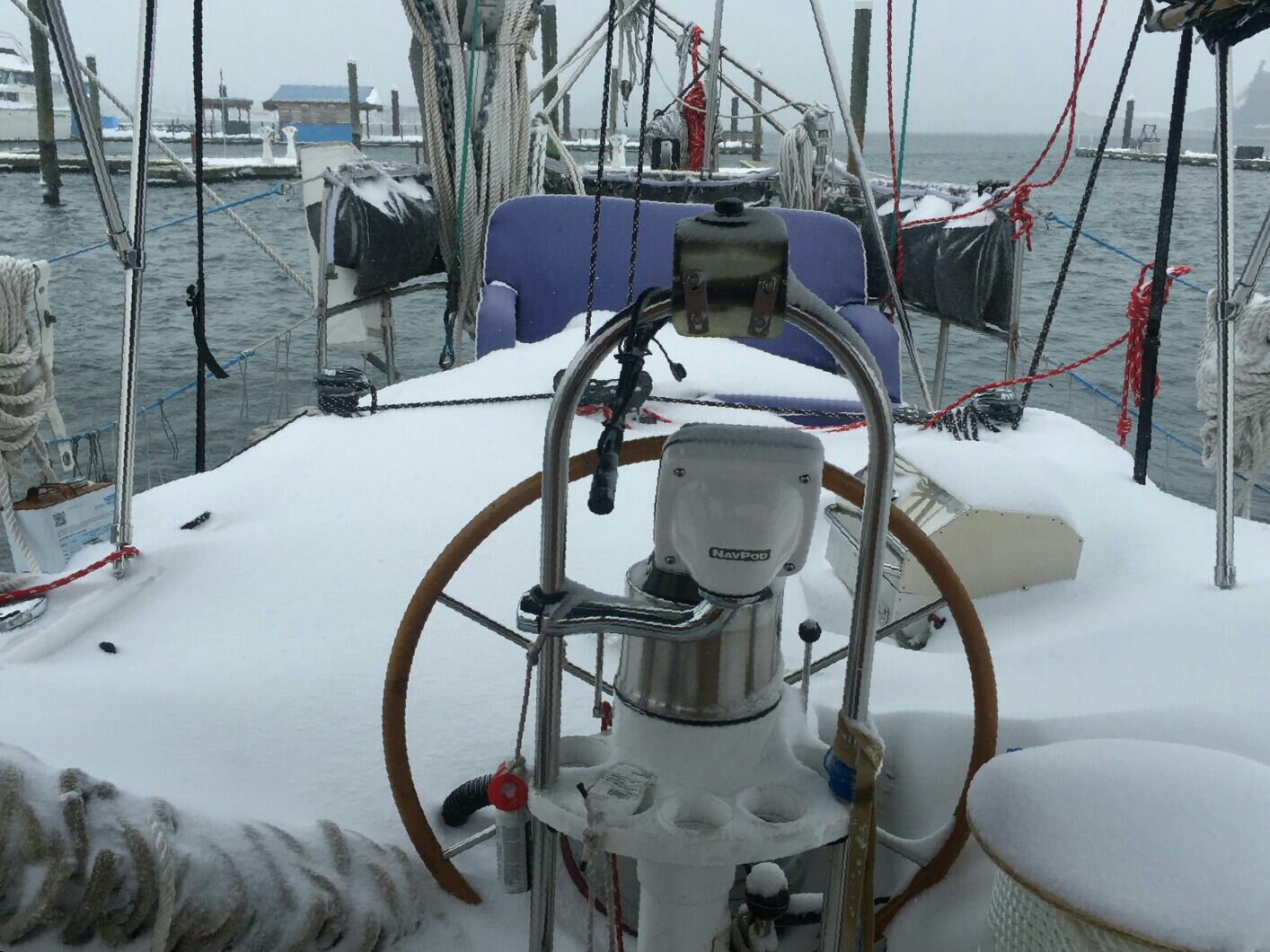Crazy Snowpocalypse is on its way, and many people have been asking me how I plan to fair on the boat. What will you do for heat? Won’t you go crazy? There’s something romantic about being stuck in a little boat with the love of your life, keeping warm, snuggling, and watching movies…but not for three straight days. Most of the preparations on my end included selecting movies and gathering things to keep myself occupied. I’m the kind of person who can do nothing for a day and feel rested, but if I do nothing for three straight days, I will indeed go nuts.
Thankfully, Herby’s got the heat situation figured out. We have four methods of heating our little home: base boards, space heaters, reverse cycle, and the diesel heater. The baseboards are the weakest and the space heaters become useless if we lose electricity. The reverse cycle no longer works as soon as the water temperature dips below 38 degrees F. This leaves the good old diesel, which heats the boat steadily and strongly and provides warm flickering fire and calming whirring sounds as a bonus. So, that’s the answer to the heating question.
Tackling the issue of going stir crazy is a little less obvious and depends on who you are. Herby, for instance, is an introvert, and would be fine spending months on end completely alone in a tiny boat. He’ll be working on various projects involving rope and weird looking tools: nothing out of the ordinary. I on the other hand am an extrovert. I could never be alone on a boat, but luckily I don’t have to be! Herby will always be within a 35-foot radius of me. Luckily, this excites him too or we’d have problems.
The boat doesn’t exactly lend itself to a lot of movement and physical activity, so I have my yoga mat. Yoga is an excellent way to both clear your mind and keep those muscles active. The same thing applies for a long excursion during which you may not touch land for many days. It sure beats jogging in place at least.
Herby and I love games, so we have a few games on the boat that keep our minds exercised and challenged. I strongly recommend games as a pastime with your partner, even if you’re not on a boat. It’s intellectually stimulating and can be funny as well as competitive. A little competition never hurt anyone…except me on the inside every time I lose at anything. Anyway, games are way better than watching TV. That being said, we did download a ton of movies to watch during this blizzard. I plan to do a lot of art while we watch.
You may or may not know that I am an artist. Therefore, in order to prepare for a weekend trapped indoors, I brought a ton of paints, brushes, and canvases to the boat. I’ll do another post about being an artist on a boat, but I plan to make good use of my time this weekend by completing at least three paintings! (By the way, I do commissions if you’re interested.) --> Shameless self promotion…
Anyway, we definitely plan to keep ourselves very warm and occupied during this storm, just as we do during long trips at sea. Just like everything about living on a boat, you’ve got to have an open mind!












